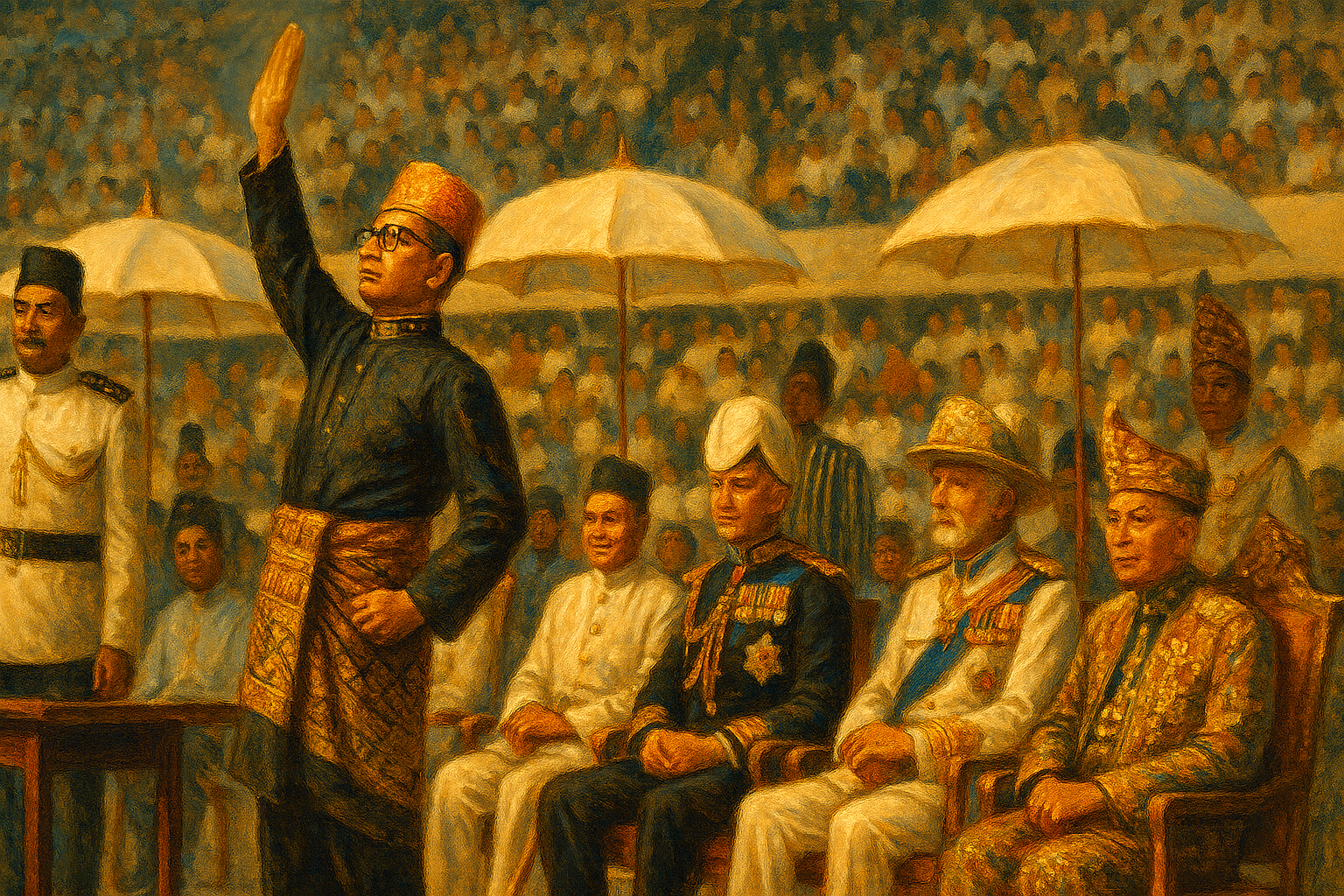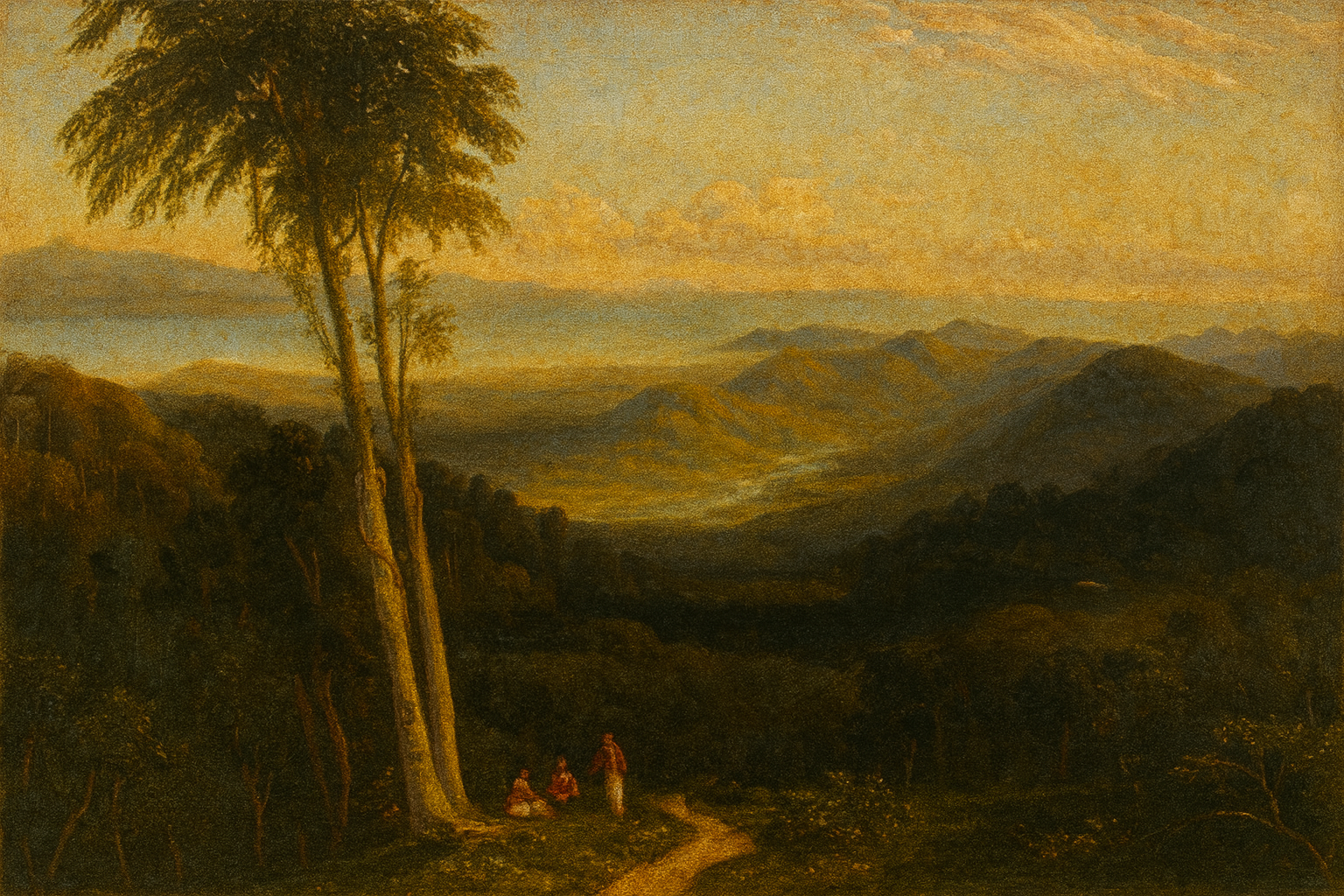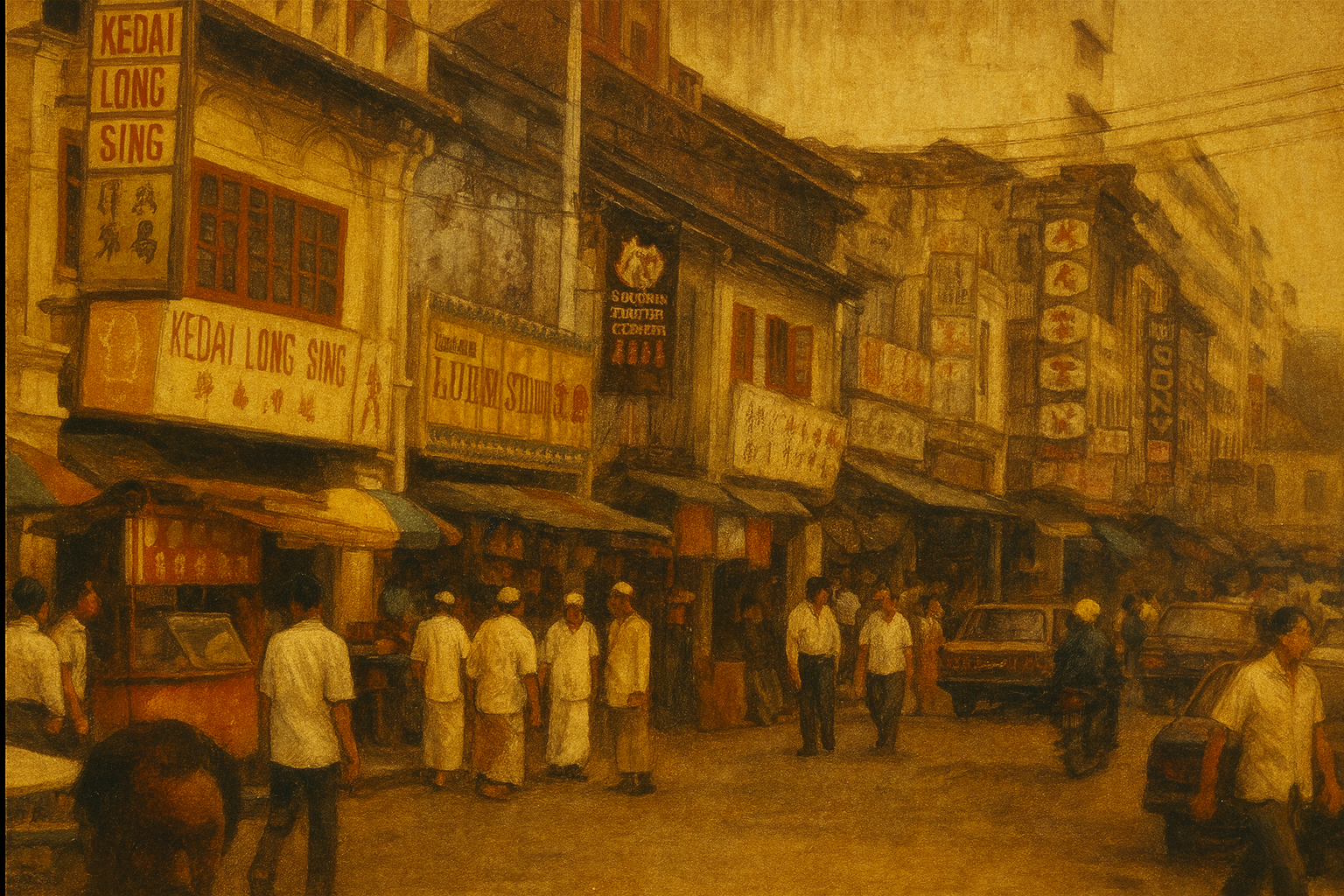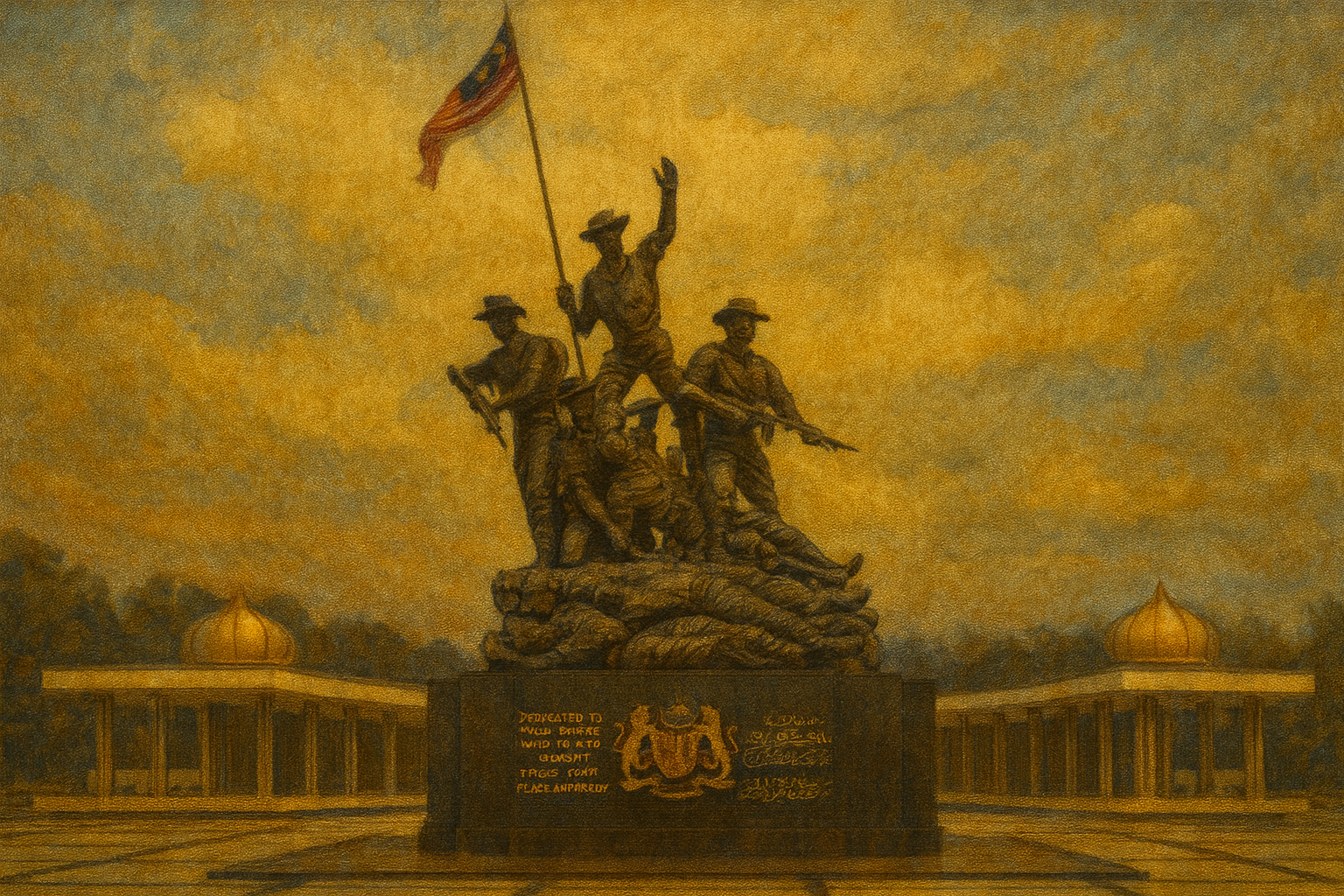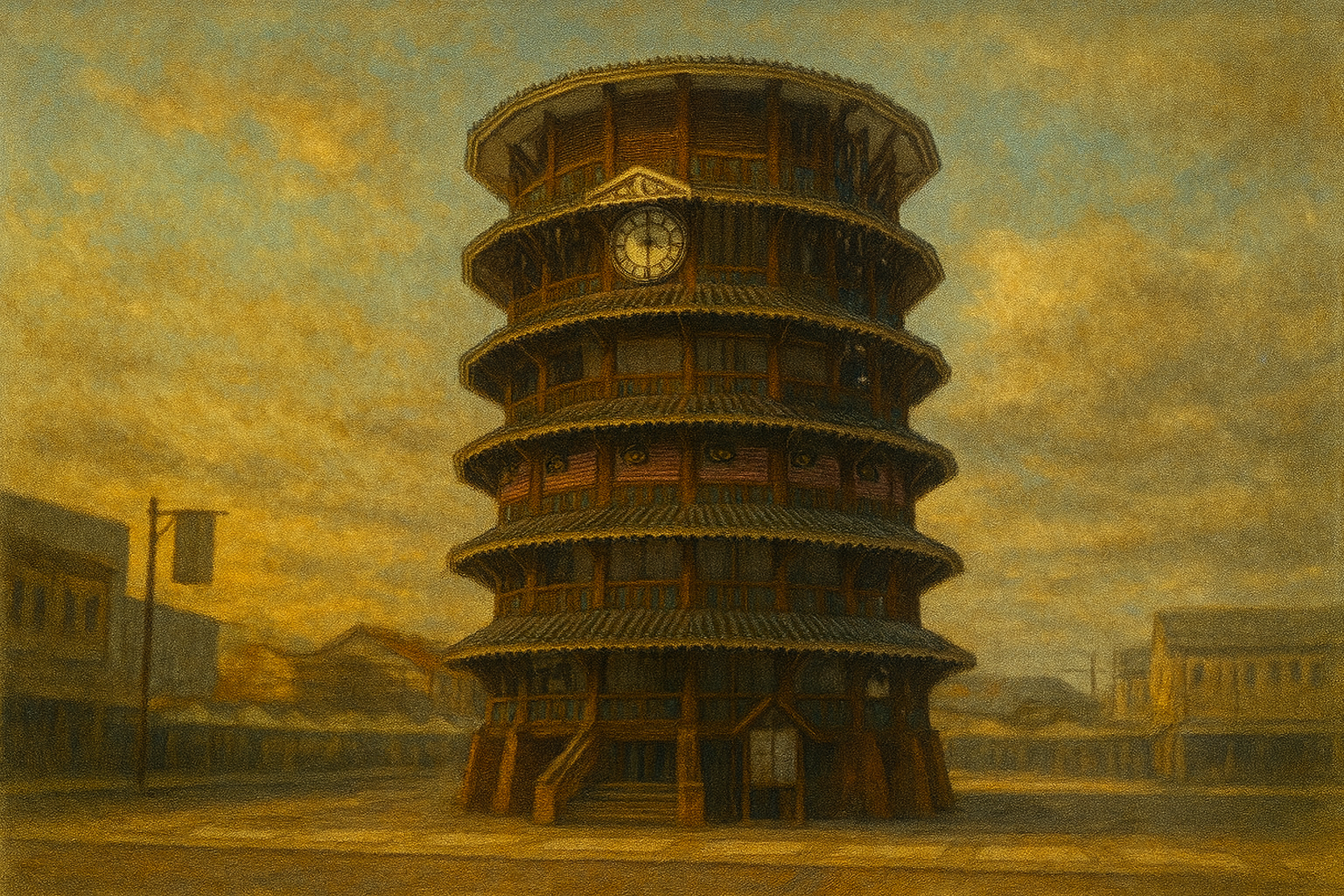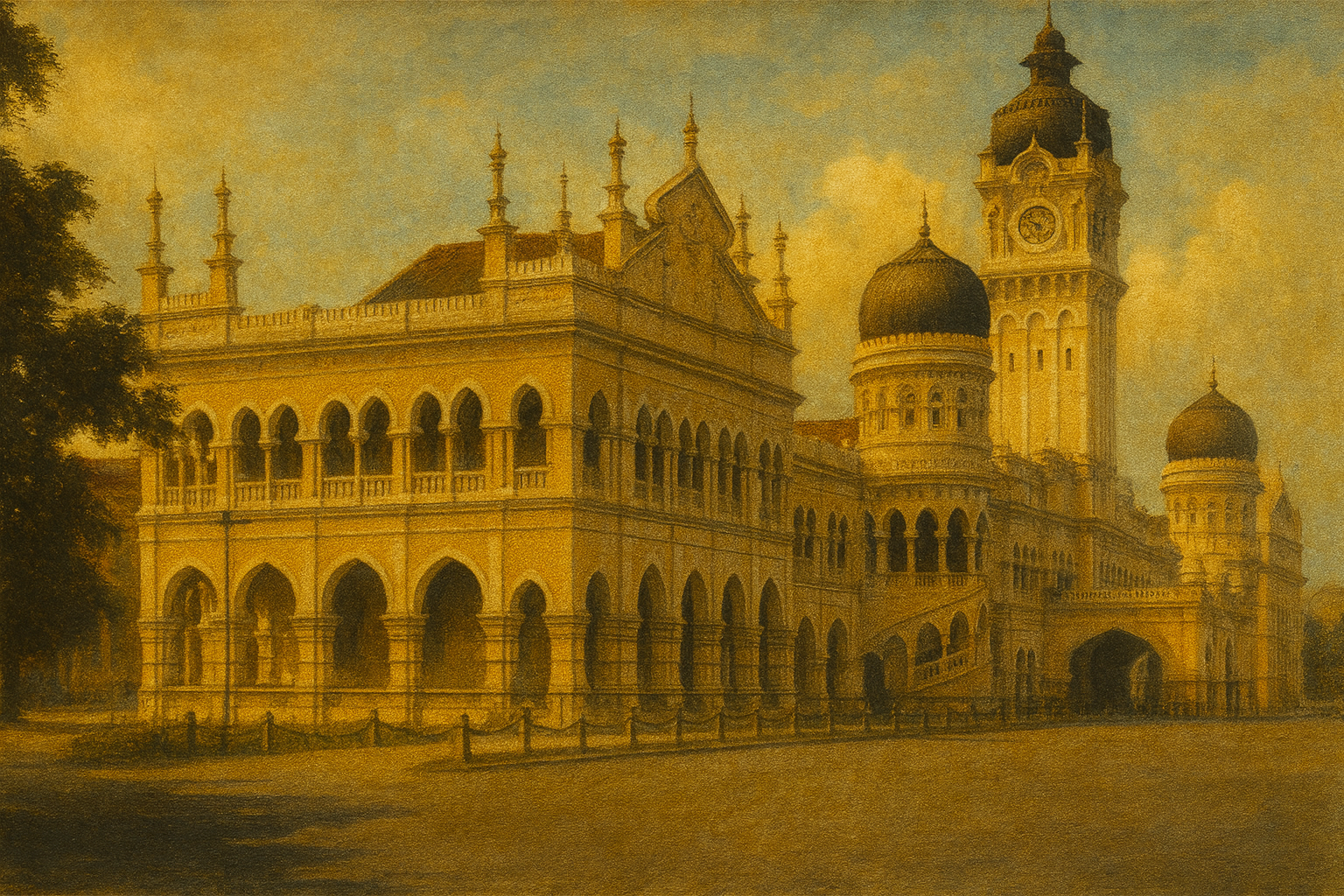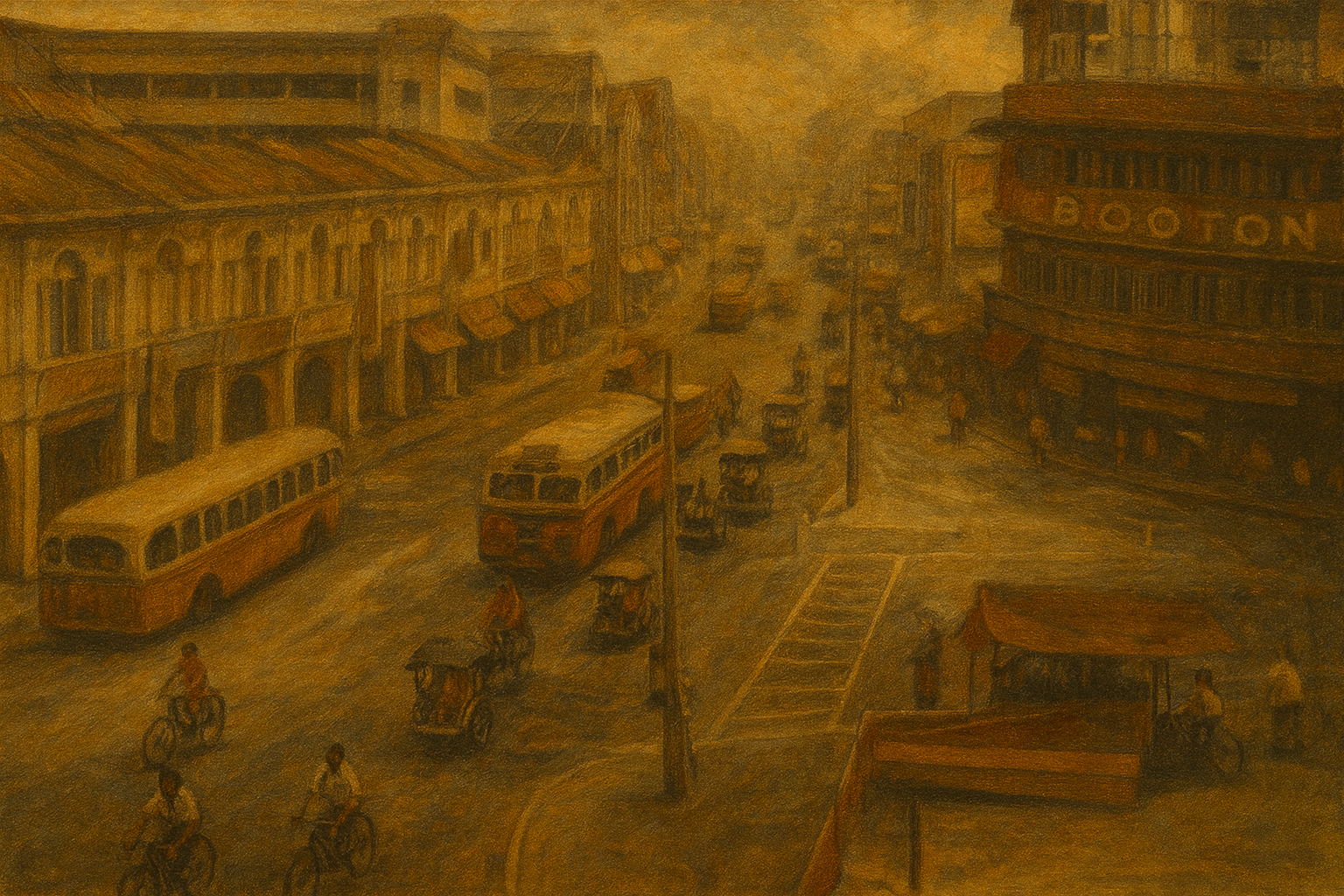1960



| Currency Rate to USD | 3.06 |
| GDP Per Capita (USD) | 240 |
| Population (millions) | 6.92 |
| Nasi Lemak Price | 20 cents |
| Teh Tarik Price | 10 cents |
| Urban Population Percentage | 25% |
Formation of Malaysia Era
For everyday folks in Malaya/Malaysia, this era was full of hope, political energy, and uncertainty. The lead-up to Merdeka (Independence) meant rising political organisation, negotiations, debates about citizenship, race, language.
Malayan Emergency Era
Life during the Emergency meant fear, disruption, and deep divisions. For many rural folks, night-raids, curfews, food scarcity, and forced relocations (into “New Villages”) came with the insurgency.
Cold War
After WWII, the world splits into blocs—capitalist West led by U.S., communist East led by USSR. People everywhere feel the pressure: fear of nuclear annihilation, propaganda, ideological influence in media and education, proxy wars in Asia, Africa and Latin America.
Arrival of the First FELDA Settlers in Lurah Bilut, Pahang
The arrival of the first FELDA settlers in Lurah Bilut in February 1960 marked the beginning of Malaysia's ambitious rural development program, aimed at resettling landless families on government land to cultivate cash crops and alleviate poverty.
1960 AFC Youth Championship
The second edition of the AFC Youth Championship, hosted by the Federation of Malaya from 30 March to 7 April 1960, saw South Korea defend their title amid post-independence nation-building efforts in the host nation.

Death of Tuanku Abdul Rahman, the first Yang di-Pertuan Agong
Tuanku Abdul Rahman, the inaugural Yang di-Pertuan Agong of the Federation of Malaya, died on 1 April 1960 at Istana Negara in Kuala Lumpur, prompting national mourning and testing the young nation's elective monarchy system just three years after independence.
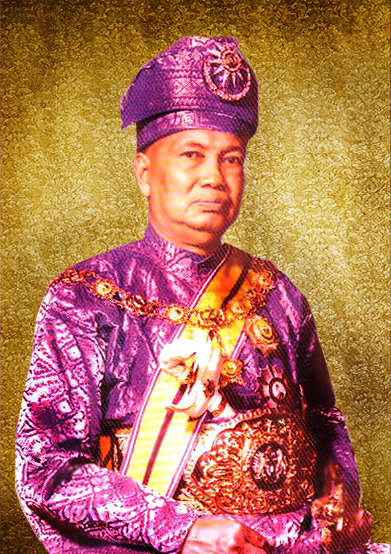
Installation of Sultan Hisamuddin Alam Shah as the Second Yang di-Pertuan Agong
Sultan Hisamuddin Alam Shah of Selangor was elected as the second Yang di-Pertuan Agong of Malaya on 14 April 1960, following the death of the first monarch.

Incorporation of Malayan Banking Berhad (Maybank)
The incorporation of Malayan Banking Berhad on 31 May 1960 marked a pivotal moment in Malaysia's financial history, establishing the nation's largest indigenous bank amid post-colonial economic transitions and reducing reliance on foreign institutions.
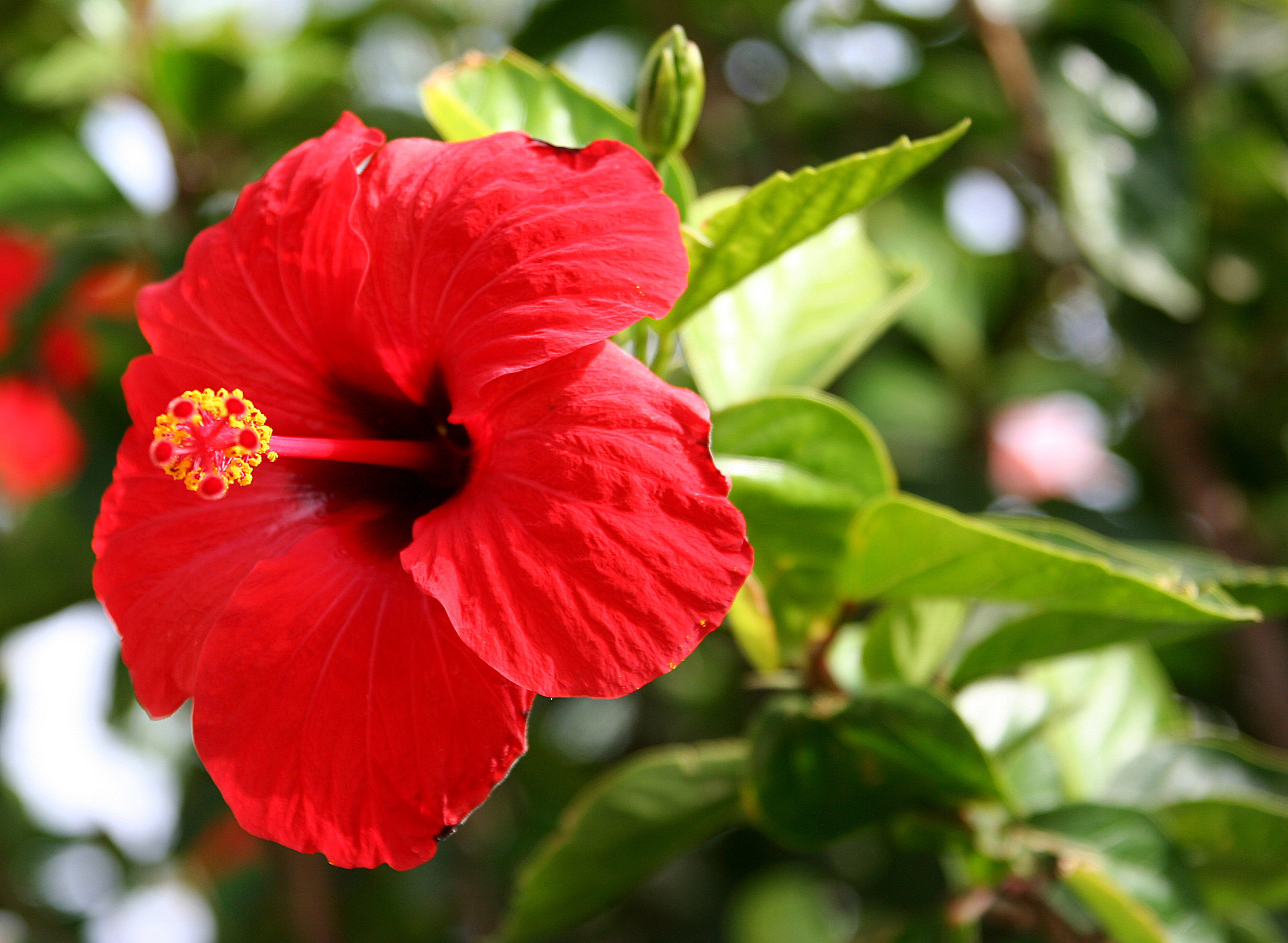
Declaration of the Chinese Hibiscus as Malaysia's National Flower
On 28 July 1960, Prime Minister Tunku Abdul Rahman officially declared the Chinese Hibiscus (Hibiscus × rosa-sinensis), known locally as Bunga Raya, as Malaysia's national flower, symbolizing the courage, unity, and vibrant growth of the newly independent nation.

End of the Malayan Emergency
The Malayan Emergency officially ended on 31 July 1960, marking the conclusion of a 12-year guerrilla conflict between the Federation of Malaya's government and communist insurgents led by the Malayan Communist Party.
Enactment of the Internal Security Act 1960
The Internal Security Act 1960 (ISA) was enacted on April 1, 1960, in the newly independent Federation of Malaya, institutionalizing preventive detention powers to address national security threats, particularly from communist insurgency, and succeeding the colonial-era Emergency Regulations.
Malaya's Participation in the 1960 Summer Olympics
The Federation of Malaya's delegation of nine athletes competed in the 1960 Summer Olympics in Rome, Italy, representing a milestone in the nation's post-independence sporting efforts without securing any medals.

Beginning of Malayan Contribution to the United Nations Operation in the Congo
In September 1960, the Federation of Malaya deployed its first international peacekeeping force to the United Nations Operation in the Congo (ONUC), marking a significant step in the young nation's global engagement amid the Congo Crisis.

